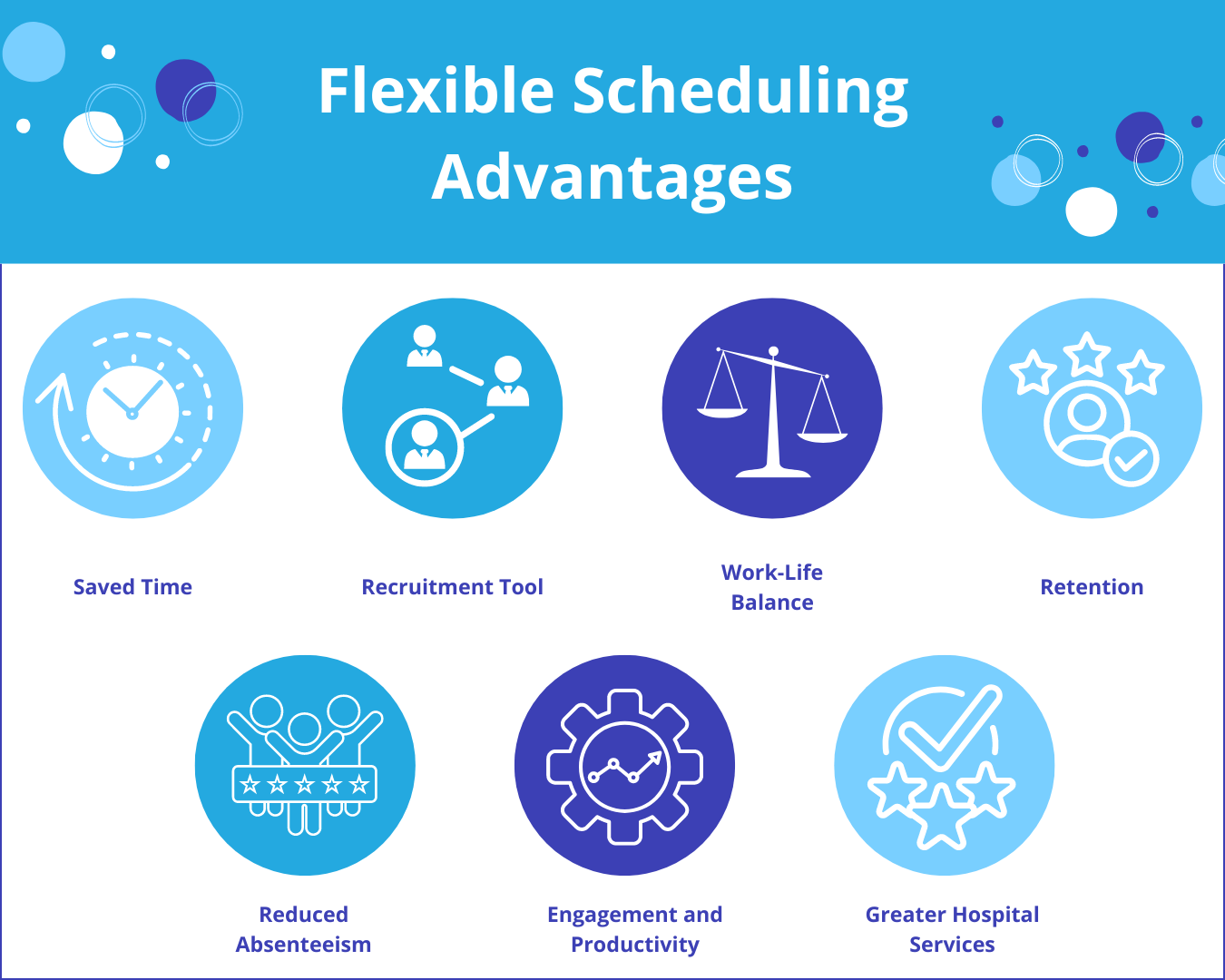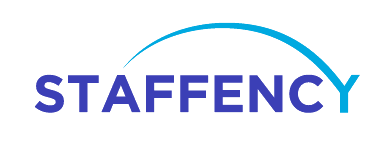
Healthcare worker shortages have had several adverse effects within the industry. Shortages have led to increased workloads for employees, burnout, and a fierce competition for talent among health institutions. Coping with shortages forces shorthanded staff to take on rigid, lengthy and unhealthy work schedules that exceedingly take a toll on employee wellbeing. Such work demands further fuel turnover and shortages as healthcare workers are leaving their positions or retiring early.
While shortages stem from an array of factors such as greater nurse retirements, increased care demands from the Baby Boomer generation, and limited educational resources to take on medical students, a lot of turnover, and resulting shortage gaps, have direct ties to the medical institution’s demanding workloads and rigid schedules – often out of necessity.
Reducing turnover is a top priority for healthcare HR, hiring, and nurse leaders. With a great demand for talent and limited workers available, employees have the luxury of leaving institutions for those offering better experiences, particularly towards those catering to the wellbeing of employees. A highly effective avenue for attracting and retaining talent that healthcare systems are adopting is flexible work schedules.
Flexible scheduling directly addresses the issues surrounding employee wellbeing post-pandemic. By implementing flexible scheduling solutions to burned out employees, your organization can help alleviate demands and reduce turnover trends. This long-term solution is essential in today’s competitive landscape and has become an expected prerequisite for candidates evaluating job offers.
Flexible scheduling strategies serve to mutually benefit healthcare facilities, employees, and the overall bottom line. Benefits include:
- Saved Time
- A Recruitment Tool
- Improved Work-Life Balance
- Increased Retention
- Reduced Absenteeism
- Employee Engagement and Productivity
- Greater Hospital Services

As flexible workforce strategies aren’t a one-size-fit all solution, this blog covers the different flexible scheduling strategies to implement, as well as the overall benefits flexible scheduling has for healthcare organizations.
Scheduling Strategies
1. Alternative or self-scheduling
Self-scheduling refers to the ability of employees to choose or trade upcoming shifts. Schedule needs are determined by supervisors based on demand. Employees have the ability to see the schedule, choose shifts and determine their own schedule. Other flexible scheduling options include staggered start times, compressed workweeks, shorter shifts, or having the flexibility to accommodate time off.
2. Contingent Labor
Use a contingent workforce to accommodate unwanted schedules and time off to help increase core staff wellbeing. Contingent labor is a valuable asset and can be used strategically to meet both short-term and long-term needs. Managed service providers (MSPs) are often utilized within healthcare systems to source a greater network of candidates for both contingent and permanent placements. Learn how MSPs help build your contingent workforce and the benefits an MSP can have for your overall workforce strategy.
3. Deployable Float Pools
Similar to contingent labor, strategic float pool nurse teams can be utilized to cover department shortages and also accommodate core employee schedules for time off or choosing their preferred hours. Float teams differ in that their flexible and versatile skills can be used in varying departments rather than being restricted to a single specialty unit. This can be valuable when a unit or department needs staff on short notice. Organizations can source temporary or full-time flotation nurses through MSP services as well.
4. Job Sharing
A job sharing program entails nurses arranging with one another other to collectively work part-time in order to complete 1 full-time equivalent (FTE). This allows involved nurses to work part-time and reduce their workload for greater work-life balance. Job sharing often necessitates strong communication between coworkers and managers.
Benefits
Flexible scheduling strategies have fundamental and far-reaching impacts on employees, healthcare organizations, and clinical operations.
1. Saved Time
A noticeable benefit flexible or self-scheduling has is saved time for management. Scheduling can be difficult and time-consuming, particularly when considering work demands and the needs of employees. The ability for self-schedule frees up time and resources on assigning schedules that employees may be unhappy with. Allow core staff to manage their schedules and use contingent labor or float teams to cover remaining shifts.
2. Recruitment Tool
Offering flexible scheduling is a competitive advantage that can be used to attract candidates and increase the talent pool from which to hire from. The opportunity to have flexible scheduling options indicates to candidates that employers care about their wellbeing and happiness. Whether organizations offer flexible scheduling solutions may make or break a candidate’s decision to join an organization.
Market flexible scheduling solutions within job descriptions and the type of flexible work models that are offered to help generate candidate interest.
3. Greater Work-Life Balance
Greater freedom in controlling schedules empowers employees to balance their work-life. Employees can schedule shifts to prioritize their needs, personal lives and wellbeing. Additionally, scheduling flexibility helps alleviate demands, workloads, and overbearing shifts – all of which contribute to burnout.
4. Retention
Promoting a healthy work-life balance through flexible work schedules helps improve employee wellbeing and minimize workplace turnover. Organizations caring for employee wellbeing and happiness foster a culture of trust and respect, which leads to employee loyalty in brands. One company survey showed that 80% of its respondents would feel more loyal towards a brand if they offered flexible scheduling.
5. Reduced Absenteeism
With freedom and control over work schedules, employees are more likely to appear for shifts that they have committed to, reducing absenteeism. Greater instances of employees not turning up for their shifts leads to greater workloads for fellow workers and negatively impacts hospital care, as well as patient experiences. Reducing absenteeism helps strengthen workforces and enables organizations to deliver consistent healthcare to patients.
6. Employee Engagement and Productivity
With employees achieving a greater work-life balance, individuals are better able to care for themselves and improve their wellbeing. Employees at their best are likelier to show up for work and actively engagement and perform their best. Workers enduring overwhelming schedules and work may experience reduced morale and productivity.
7. Greater Hospital Services
Greater employee presence and productivity enables healthcare practitioners to deliver high quality care to patients. Inadequate nurse staffing and overwhelming work often leads to unintentional medical errors, increased infections, and higher mortality rates. Greater hospital services benefit patients, employee morale, and hospital reputation.
How can we help your organization achieve flexible work scheduling?
Staffency’s total talent workforce solutions aims to achieve your organization’s workforce goals. For hospital leaders seeking to increase retention efforts, flexible scheduling is a must.
Staffency recruits float teams and contingent workers on your behalf that can be used to help alleviate workloads for your core staff to increase workplace happiness and retention. Contact an expert on Staffency’s team to discuss how we can address your workforce challenges.
